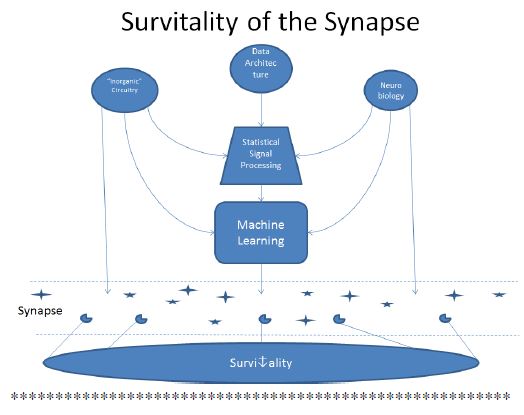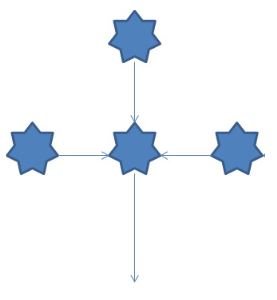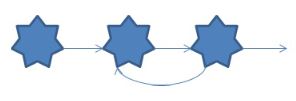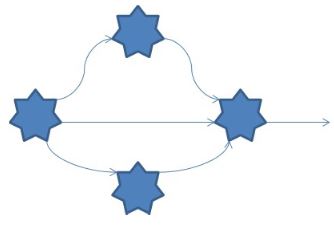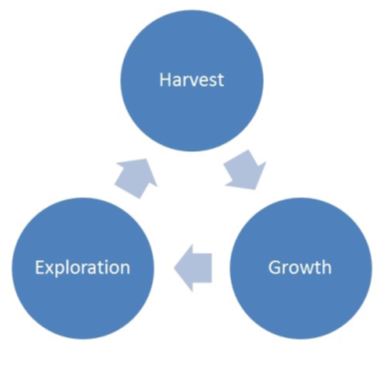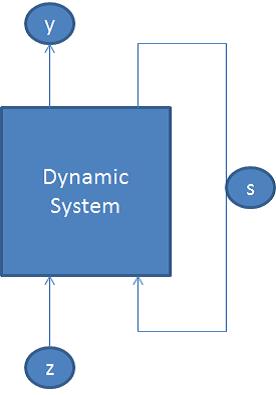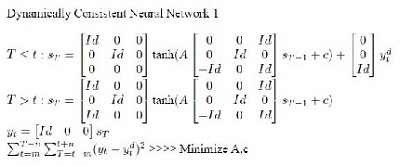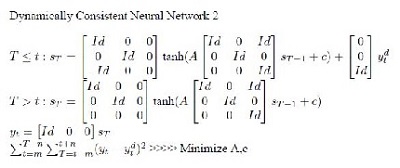Survivtality of the Synapse
For ND
“Learning nourishes the seed but it gives you no seed of its own.” – Kahlil Gibran In a bar conversation, over watermelon hukah and Israeli Mules, with a biochemist, two linguists, and a data architect, a practical scale separating what is natural and what is artificial was created. That which is natural applies to nearly all and that which is artificial applies to nearly none. Just as I would be happiest crying through a violin, so all does the tree shed seed through “inorganic” processes. A seed is artificial and a tree is natural.
The “organic” movement aims to flip Maslow's hierarchy of needs on its head and deem innovative agriculture as a pinnacle of enlightenment. In the field, you will notice the pure analogy that a farm is to all shared services. Imagine you have a pest problem that needs to be managed. There are two approaches that the farmer can take – one being a suppressive approach – chemicals – and the other being a preventative approach. A wise farmer chooses the later because he doesn't want an flood of pests destroying the vegetables. To prevent all out insect devastation, the farmer builds up predators as a line of defense. The beefed up wasps and ladybugs enforce peace by devouring pests on a daily basis – to spread out the distribution. Integrated Pest Management can easily be related to the policing ISIS.
I studied: 1. Neurobiology to better model “organic” data architecture 2. “Inorganic” circuitry to grasp the limitations of computer hardware 3. Statistical signal processing to brush up on my sensory mathematics
This research rides the razor sharp edge between rationality and irrationality, objectivity and subjectivity, and the Peripheral Nervous System and Central Nervous System. If you are not willing to sacrifice your logic for truth then do not read on. Who was it again that said that the law of non-contradiction always applies? Probably the person who said that “everything is relative.” So focus when you feel like focusing and take breaks to create art in between chapters. You could probably learn more about the topics I model by going out into the woods.
Contents
I. Data Architecture II. Neurobiology III. “Inorganic” Circuitry IV. Machine Learning V. Neural Networks
Synaptic Intermission • Music Score (Artificial Intercourse) • Music Score (Buried Intercourse) • Music Score (Natural Intercourse)
5. Statistical Signal Processing 4. Macro Synapse 3. Grandfather Pendulum Swing 2. Proposed Reproducible Experiment (for the sake of science) 1. Survivtality of the Synapse
I. Data Architecture
Poetry and Constitution Decomposition
There is nothing rare about the beauty of nature. You can discover it at every turn of the head, every blink of the eye. Some people find beauty in the immediate experience of natural phenomena and some people find beauty in the symbolism hidden in the processes of nature.
At the beginning of my excursion through artificial intelligence, I studied the architecture of data. The goal I set, to bring drive and purpose to my hiatus from formal collegiate studies, was to decompose the U.S. constitution so as to understand the linguistic components of a document that positively programs human behavior (“Freedom to…” versus “Though shalt not…” versus “We've been watching your credit card expenditures and assume that you are interested in…”).
Six months before, I had already created a poetry decomposition software using a database, math equations, and a graphic user interface. I programmed the graphic user face, which looked like a very basic web site page, using a language called HTML. Computer languages help the programmer instruct the electrical wires and chemical metals of the computer what to do. Communication between the programmer and the computer needs to happen in a language that makes sense to the computer. Imagine Lassy barking at her owner, warning him/her of trouble or identical twins telling each other inside jokes in their own language. Although information is lost in translation, poetry won't decompose itself!
So I created a GUI (graphic user interface), using HTML and constructed a database using another language called SQL. Databases are very crucial for the organization of data. Most students in the U.S.A. nowadays (2015) have created a database using Microsoft Excel. A database is composed of tables of data. When I broke down Shakespeare's archetypal love poem, “Shall I compare thee to a summer's day,” I used tables to store the broken down – they were: Poem, Stanza, Line, Word, and Phoneme. Notice how each table relates to the previous by at least one dimension/property. The Stanza table records which poem the stanza belongs to. The Line table stores which stanza, and indirectly which poem, the line belongs to. And so on. The connections between all tables make the entire database a Relational Database. The poetry decomposition database, for you, the reader, as well as for me, acts as a perfect foundation for the perspective that a data architect has when he/she ventures out into nature. It's all about quantification, classification, whole integers, relations, and a lack of any light hearted elation. There's nothing awkward or boring about data architecture – it's just cold. Let me tell you a little more about the poetry decomposition to enforce a strong foundation. There's a GUI, a database, and mathematics involved in decomposition. The GUI can be thought of as a pretty face that the programmer has trouble looking past in order to tap into those crucial memories which are stored in the pretty face's database – both of which speak different languages. The magic, the charm, and the love lie in the intercourse between the body and mind. PHP acts as a medium for communication between the database and the GUI. In my poetry decomposition, I used PHP to breakdown poems into packages that perfectly fit into the drawers of the tables. Let's get this clear, all of language can be converted into mathematics just by the nature of what mathematics is. Imagine replacing every letter with a number and you've got a language that looks similar to mathematics. Even mathematics uses alphabetical letters (E=MC2). On top of it all, we speak math in natural language (“E” equal “M” “C” squared). What I'm trying to say is: Symbolism is sexy too.
My poetry-decomp program was purely useful and “bare bones” beautiful. Although I love symmetry, supporting function brings flare to the mundane. I plan to look to consultants in journalism, editing, engineering, marketing, computer science, physics, and linguistics for true expertise in data architecture. One essential practice is diagramming relationships between tables, metaphors, and objects of interest. A very useful computer language was created recently that's makeup dates back to the Greek philosophers: Plato and Aristotle. The Greek philosophers wrote that all objects have properties and that every property can be thought of as another object with properties. Hypothetically, the decomposition can continue on indefinitely. Object-oriented programming languages help programmers teach capture the usefulness of this method if modeling. This is really crucial.
The reason why the impracticality of infinite decomposition is important is that NATURAL language composition requires that words have definitions. A definition aims to decompose a line, word, stanza (or object in programming) into its parts. Intuitively, if you decompose a stanza into lines, decompose lines into words, decompose words into definitions, and decompose definitions into second order definitions, you will notice that the process could go on forever.
Anna Wierzbicka researched semantics linguistics for over 30 years. What sets her apart from other linguists is her emphasis in semantics or meaning. Most linguists disregard meaning as spawning primarily from other properties of language – grammar rules. Wierzbicka arrived at model of language that utilizes these simple little words that makeup up all other words. Just as a prime number is indivisible, a semantic prime is also indivisible (which actually means that once this model is in place, these words will have no meaning, but that is difficult to grasp). Hypothetically, all of language can be broken down into around 40 semantic primes. Practically, I will break down the Constitution into a long string of 40 primes – is what I thought to myself when I read Wierzbick's Semantics: Primes and Universals (1996).
Some say that the Constitution is a living document. I take that metaphor very seriously. No drama, I planned to genome sequence the document that bounds our actions. Just as the biological DNA sequence has 4 base nucleic acids that makeup the framework, so also must the Constitution, an assumed to be living document, have a “backbone.” I have no pressure to tell you why I pursued this because it is all Americans' duty to understand their Constitution. The question I ask you is: How would you design the structure of the constitution decomposition?
Amazon Web Services
Some clouds in the sky are white and fluffy; some clouds are dark, dank and menacing. Some clouds rain water and tempt men to cry – to hide their tears. Some clouds build enough potential with mother nature to induce electricity. The cloud that penetrates all of our skulls on a daily basis is invisible. Amazon provides cloud-based services that allow a young, poor programmer to practice creating data architectures so that he may one day be able to get a job in organizing and analyzing important data – an emerging trade in our world economy. We are so fortunate that Amazon indirectly provides free training for skills that can help a dude compete.
Awaken in this next section because it can be hypnotisingly boring. I recommend you listen to James Brown.
My goal was to create a data architecture with minimum security – I saved the security for the professional gamers. The data architecture I created had three parts to it. We've got a client, we've got a web server, and we've got a database. Like when I described the poetry decomposition software I will take you step by step through the way a soul man creates a web site, or app. For the client, I chose an android app – which means that I needed to create a GUI and the thought power behind the pretty face. For the web server I searched through the Amazon Web Services. Amazon has computers, spread throughout the nation, which anybody can “rent” out. The beauty of the situation is that I, as the manager, pay only for what I use on the computer. Also, my laptop, which I can take to my local watering hole, doesn't have to be an expensive, fast computer. I basically need to have access to the internet – I can access the computer that I'm “renting” out through a web site. I also stored the database on the Amazon service.
You with me? Let me take it to the bridge!
I spoke to my “rented” out computer using Java, PHP, XML, and SQL – for mathematics, for mathematics, for visuals, and for database storage, respectively. The architecture really pops when the system is not just any type of machine. The app has got to talk real sweet to the database and the database has got to know how to cater to its client. All the data architect should need to do is set the whole party in action, encourage healthy intercourse between the different members, and a strong interdependent group of friends should be able to accomplish some really amazing things. Something cool about the art of data architecture is the freedom to model how you want to model. To make easier for any business partners or clientèle to grasp the magnitude of your processing power, it's nice to change the names of the virtual documents and folders to better represent your company's image. For instance, an astrology company may use stars and planets as the objects and properties that are relevant to their business.
II. Neurobiology
If any analogy I display should be remembered, it should be the following. Just as the scientist thinks that truth can better be modeled with accurate and precise measuring devices, so also does the wise man/woman aim to better his or her sensory organs. The hidden states of reality can only be realized with careful consideration of the external world as well as the inside world. And I have an inkling that harmony between the two might help us pursue the ends towards which we pursue.
I took that feeling and directed my studies towards neurobiology. At this point I started to Poincaré some patterns and thought that an understanding of the framework of the brain and body might condition my thoughts in a natural way.
Observers identify the soma, axon, dendrites, and receptors as constituents of the neuron. Neurons organize into large circuits. Man splits up nervous system into the Central Nervous System and the Peripheral Nervous System. The CNS is the brain and spinal column. The PNS is nervous system of the body. The length of a neuron ranges from less than a millimeter to longer than an American ruler. There is a neuro that extends from the lower spine to the big toe!
The circuits that compose the nervous systems vary in the construction of their networking. Let me lay out a few circuits. Keep in mind that these circuits are biology based. Hipsters in San Francisco may consider this “organic” circuitry. Later I will expound upon “inorganic” circuitry which is meant to be the metals and chemicals of computer chips. Traditionally, “organic” applies to carbon-based chemical combinations. The Hipsters a socially altered meaning for “organic” that is associated with being “without artificial influence.”
Diverging “organic” neural networks splits the signal from one neuron and sends it to other neurons which again split the signal to an ever increasing number of neurons. The signal amplifies as it progresses out to cascading neurons. Does this network remind you of the poetry decomposition database tables? It should now that I have prompted the thought.
Converging “organic” neural networks concentrate signals into a common neuron. As the diagram reveals, multiple neurons leak out their neurotransmitters at the receptor sites of one single neuron. The common neuron can only intake a concrete number of the cesspool of chemicals available in the space between the neurons.
Oscillating “organic” neural circuits almost wave like a plucked guitar string due to axons that reach back from the neuron to the previous neuron. The circular firing of neurons is called “positive feedback” because with each firing of the neuron, the process continues. An example oscillating “organic” neural circuits is the storage and retrieval of short-term memory.
Parallel “organic” neural circuits have neurons that transfer information in parallel chains to eventually converge at a common output cell. The signals arrive to the output cells at slightly different times which gives a pulse to the output cell.
Axon Axiom
I’m going to take a slightly more abstract approach in revealing what exactly I am trying to expound.
In the realm of ethics, people talk about if it's right or wrong to do something. They declare what ought to be. Let's say that Pinnochio plans to walk down to the local pool hall. Once there, he will have to make a decision as to which pool cue to use – the long pool cue or the short pool cue. Pinnochio plans out beforehand that he will use the short pool cue because he is physically short. In foresight, his plans seem very logical and rationale. He also thinks that in hindsight, or after the pool event, he will also feel that the best decision is to use the short pool cue. Somethings remarkable happens when Pinnochio gets to the pool hall. Before his grasshopper could catch up, Pinnochio picks the long pool cue. Pinnochio noticed that other young men were using long pool cues. Without Gipedo, without strings, and without a conscious, Pinnochio chose out of reflex. Reflexive decision making is not bound by the same ethics as hindsight or foresight analysis. In a survival of the fittest type moment, a man does whatever it takes. The masses take the path of least resistance when climbing a mountain as well as while thinking a thought. Take that one step further to reveal the nature of decision making in general. A man may construct a beautiful mental architecture, but he is always bound by the body.
The axon's method of signal transmittal ought to be used as a model for “inorganic” circuitry signal processing. The “knee-jerk” reflex reveals what's going on in the hidden states of the body. A common situation in neurobiology is that for the brain or body to perform a function, it tends to also perform an anti-function. For the “knee jerk” to occur, the spinal column stimulates the quad and inhibits hamstring.
Another general phenomena is the tendency for change to be a result of concentration gradients. As the signal travels down an axon, the chemical gradient within and without the axon ebbs and flows. In “organic” natural circuitry, there is a gradual build from gate closed to gate open – a gradual build from 0 to 1. It takes time to get it primed and ready for functioning.
III. “Inorganic” Circuitry
• Suffering (Grace) • Selfishness (Empathy) • Sex • Love • Feedback Loops • Complementary input values from same stimulus • Senses -> Separate Neural Networks • Shared Services • Continuous Scales (e.g. Music, color, number) • Discrete Hierarchies • Induction to create "truths" • Deduction using "truths" (Axioms) • Learning to reduce error (Error Correction Neural Networks) • Game theory between players of all sorts • Utilitarianism (increase pleasure / reduce pain) • Path of least resistance • Master / Slave Morality • Hegemony (Emulation) • Sense of ownership • Associative models • Appropriation of materials (Including and totally not limited to MONEY) • Order from chaos • Uncertainty (I am wrong) • Orders of magnitude • Paradigms • Interdependence • Survival • Vitality
So then what is not life? Chemists break down the world's substance into a table of chemicals yet there is no “life” chemical. There must be a certain combination of chemicals that leads to a difference between a living grandparent and a dead one. Biologists attribute the first cell to the tendency for oil to bubble up in water. Essentially, life penetrated an oil bubble and formed the first cell. To continue with the Hipster marketing lingo, I will refer to inanimate, computer circuitry as “inorganic.” Firstly, circuitry on the microscopic level involves inlaying chemicals and substrates into sheets of material. The closest natural model is soil. Soil forms in layers and very much resembles the circuitry of computer chips. Imagine a cross-section of soil that has layers interweaving – rather than being parallel. Then imagine electricity traveling through some layers and not through others. Now, in your mind, replace the soil with metal and shrink the layers down to the size of a dime or smaller. Computer chips ought to be thought of as solid-fluid organelles that relay information through chemical gradients.
Electrons pass through wires based on the potential between the two ends of the wire. The wire has properties that limit that flow of electricity and produce heat. Electricity is always coupled with magnetism so one can immediately intuit that magnets can induce electrical shifts in circuitry.
When electrons pass through a wire, it is not an “all or nothing” process. The “point of no return” is superstition. The change from an open gate to a closed gate , and back, involves the assent and descent of a continuous scale.
The body of a computer is far too complex for me to devote a lot of valuable time to analyzing it. I do take the nature of computer hardware as a metaphorical playground. For instance, the insulated copper wire can represent a truly concrete relation between two objects. The resistance, volume, and density of the wire represent the properties of a natural relation. The properties can be thought of as separate object – described by mathematical algorithms.
If you are an engineer in computer hardware, please contact me (248) 410-5591.
IV. Machine Learning
Scientific Learning
The aphorism: “Know Thyself,” excites the soul of a tempted man. Goodbye exclusively outward modeling. We can never know who exactly we are (static) and who would want to “never change” (Jay Z)? The Greeks must have meant that each of us should “knowledge ourselves” by learning how we want to be or not to be (dynamic). Learning how to be is the closest way to knowing who you were and who you might be. A machine can learn in a geometrically similar way to animals. Think of a rocket, sent out into space by Elon Musk, which has to readjust its path along the journey. The rocket has to recalculate its coordinates because the solar system around it is a dynamic, changing system. A rocket learns how to navigate through a shifting reality. “Learning” does not only apply to human's from conception to 20 years old. Animals learn, trees learn, bees learn, soil learns, and computers learn too! The scientific method is a straightforward method for learning. As a quick refresher, the steps are something like: observation, abstract question, hypothesis, experimental method, assess uncertainty, and start over again. The fruits of science are found in experiments that are simple enough for any individual to replicate. What keeps the life cycle of science ticking is the agreement that no theory is “true” (see The Freedom to Model). Theories are meant to describe what tends to happen in nature, not what will happen.
The scientific method caters perfectly to a competitive economy that rewards product over methodology. The cool part about the intellectual property industry is that a purely hypothetical methodology can be turned into a product. What I mean to say is that a young student turned his idea of how to hook up all of his friends into a website and sold it for many millions.
This chapter aims to give an overall outline of the machine learning methodology is and how some traits of humanity can be translated to a programming language. I will go into detail after the intermission. Just remember: It's better to be on the side that is programming rather than on the side that is programmed… On the flip side, who's programming the programmer?
Machine Learning
Machine learning uses a lot of statistics – a mathematical language that merges over into the social sciences and is very artistic… at least that is what I will now sell to you. I shall be the wolf of machine learning in this writing exercise that is just as important me as it is for my children. Cut math some slack.
The art of stats lies in the design of the graphs and overall power. Before the next time you go to Las Vegas, roll dice a thousand times, make a histogram of the numbers rolled, and you WILL find a very beautiful wave form on the paper before you. We call this mysterious wave the Normal Distribution. The ND pops up in life all over the place. Not only does the shape look like an ocean wave, a guitar string wave, a mountain range, and a beautiful girl's wavy hair, so also do things left up to chance follow this pattern (look to the chapter before the conclusion for a remodeling of “random”). Kerplowww!... That's where my mind says: “I can predict the future of dice rolling. I should go hit the back alley and throw down some Washingtons! The only thing that's keeping me from doing so is that there's not enough Broken Windows back there..” Instead I hit up the durable laptop for some programming games.
This isn't going to make much sense right now but I'll come back to it after describing applications: there are three traditional methods of teaching a computer. The first is Supervised Learning which involves fitting an algorithm to a plot of data. The second is Unsupervised Learning which involves classifying and clustering data without a predetermined function. The third is Reinforcement which involves creating rewards and punishments for the computer (very theoretical).
With the learning methods in mind, I will now relay modeling techniques that artificially emulate properties of humanity (Look to The Freedom to Model). With each and every case of learning, an object takes a scan of its surroundings, comes up with an equation for how to act, acts, rescans its surroundings, and readjusts its equations ad infinitum.Affinity
Starts with a scan of the environment of data, and is followed by measuring the distances between points using a Euclidian Distance. Naturally, as more data enters the environments, distances will change. (I may throw in notes for my business partner every so often – they will be preceded by an “ND:”) ND: We could set the Constitution Decomposition coordinates to multi-dimensional matrices – non-whole integers of course.
Imagine walking into a college town bar that is bustling. Immediately, you might take a scan of the people and their corresponding locations relative to each other. Of course, you have an affinity for the symmetrical beauties so you pay attention when the people's positions change in their coordinates… kind of like players cheating at battleship.
Filter
Starts with a scan of the environment of data, is followed by a search for patterns, and is finished up with a filtering of unnecessary data. Examples include fraud detection and spam filtering. The math involved includes, but is not limited to, Baye's Theorem and Chain Theorem (Look up). Remember the normal distribution? I left out that the normal wave pattern happens over a large period of time. The math involved in filtering looks at how the wave changes from the first dice roll to the last. ND: We can tokenize the constitution and then filter out the const. prime combinations in legal documents. Look at evolution of legal documents.
An aborigine of Australia walks through the forest and sees a flower that he has never seen before. The flower has a very distinctive neon yellow stamen that the flowers around it don't have. The aborigine harvests the flower and takes it home to add its pollen to a tincture. The tincture turns out to be a very effective aphrodisiac. The aborigine then returns to where the flower grew and only picks the flower with the neon yellow stamen.
Intuition
We will now get into the exciting properties of artificial humanity. The Markov models are on a very abstract level and cover reflexive decision making in general. The models utilize transition matrices which keep track of the states of the dynamic system. The first step is to evaluate the likelihood of a sequence of events occurring. The second step is to decode the underlying state sequence. A “hidden state” is a broad way of referring to all of the action going on behind the curtain. The Last step is to learn and decide what to do next. What does your intuition tell you? Do you act on your perceptions and beliefs? Physicists emphasize that perception is not always trustworthy. From the very first step, we perceive partial truths and end up evaluating, judging, and acting based on limited models. Immanuel Kant thinks that judgment can only be learned through experience. To teach a computer how to judge, we would have to feed the computer with a bunch of data. ND: Demonstrate value of our computer's judgment by demonstrating on smaller sets of data (Look up cross validation). We get to choose the data that we want to practice on so in the end we can continue researching while training the computer. I am very interested in water cycle datasets. Water is the new oil.
Loyalty
“A poet is a bird of unearthly excellence, who escapes from his celestial realm arrives in this world warbling. If we do not cherish him, he spreads his wings and flies back into his homeland. All that spirits desire, spirits attain.” – Khalil Gibran To teach a machine loyalty, it's really just a matter of drawing a hypothetical line between groups and setting value on one group over the other.
Some philosophers argue that man does Good out of fear of punishment. Obviously, the ideal is to do good for the sake of goodness (Santa Clause clause), but the fear of prison keeps me loyal to not breaking the law. Some causes need a leader to stand up and take on the liability. Be that person because we wean from our bodies within 100 years anyway. It doesn't make sense being loyal to an appropriated resource when you don't draw the lines that carve out a synapse.
ND: For a good to be a god, you have to drop a halo.
Consciousness
A neural network treats objects and a relation in a geometrically similar way to the way a body treats a brain. Neurons represent objects and neuron clusters represent associated objects. Consciousness involves many different neural networks that can look at each other and communicate (via computer languages). The programmer trains the neural network with big datasets to be able to function on its own. Learning results from creating hypothetical (and maybe physical) rewards and punishments for when the computer performs the way the programmer wants it to. ND: Think about power management, memory allocation, “currency,” social hierarchies between networks as ways to physically Pavlov.
Self – Awareness
Alright, this is serious. What sets us apart from other animals is magnificent because we are biased as well as really powerful. Just look at all of the structures and people around you. The filth on the ground and the smog in the sky should be an indicator to the sheer impact that we have on our environment. Our minds have power just by simply being alive. Don't think that not thinking is weak. The monks shut down their desires and trained during the warring states. Imagine manage the westerners managing their peripheral nervous system the way the eastern managed theirs… In terms of self-preservation, us men have done a lot. Of course, it ain't worth it without a woman. I argue that a computer that models its data architecture in a similar fashion to the way that the “inorganic” chemistry of the computer is modeled will run better, cheaper, and faster.
Man's seed resembles his brain and spinal column. Where are you swimming to?
Interdependence
I lied about going back over the three broad classifications of machine learning (on a need to know basis). I now work under the notion that a computer's data architecture has a life cycle just like every other object in the universe. Given that a computer has a life cycle, for it to be successful, it will need to go from the dependence stage, to the independence stage, to the interdependence stage. During the dependence stage, the computer will grow from seed neural networks to partially trained algorithmic networks.
During the independence stage, the computer will continue to learn and explore by training and creating new networks using old data as well as using its “senses” that reach out into the internet. During the interdependence stage, the mind and body of the computer will be available for harvest by other intelligent computers within the internet.
Oh, and one last thing! A really important technique in statistics is to cross-validate. In cross validation, a body first cuts their data in half (hamburger or hot dog). With the first half of data, the body predicts what the second half of data would be with the computer's intelligence. If the predicted data and actual data match up, then everything is hunky dory.
V. Neural Networks
At some point, intelligence needs to stop interning with the Farmer and buy a little piece of land itself. A farm is a dynamic system with parallel, perpendicular, and tangential life cycles competing for limited resources; therefore, it is the perfect tangible model for neural networks. There appears to be order in the local organic farm: vegeta- bles in straight lines, space between each plant, watering systems constructed of metal, fences, hedge rows. etc. Breathe in (deep) the sounds, sights, and smells of life. For one season, the farm is partly an autonomous subsystem because it has many processes going on without Farmer input. On the other hand, there are many drivers of the system environment that are needed for the farm to maintain order.
Just as a bee never has enough pollen, a hungry neural network never has enough training data to refine the predictability of its algorithms. A wise bee has a pretty good intuition for which flowers have pollen and which do not. He can only refine his judgment by remembering what he has sensed about the golden dust encrusted flowers when he has found them and rewire his body to reduce the mistakes he makes.
In neural networks, a mistake is an unwanted difference between observation and prediction. With so many sensory inputs from the same flower, a little worker bee can really feel dissonant and unable to judge. He'll pull out his harmonica and ponder. Sometimes the worker bee will realize that, although complementary, the folds, aromas, textures, colors, relations, and hidden states that stimulate his senses will never add up to what the flower is.
To manage all of our sensory data, both data architects and Farmers combine many small networks into an overarching Neural Network. Just as the Farmer organizes vegetables in rows, equidistant with plenty of room for growth, so also does the data architect organize a computer's “mind” so that it has plenty of room to grow. I will relay the essential mathematics and helpful diagrams in a perfect pH kind of way. Don't worry, I will hold your hand... mainly because touch is altogether lost in this culture.
To begin, here is a diagram outlining what a “dynamic system” is. “z” represents any sort of input. For the bee, an input could be the attractive color of an angelic flower. “y” represents an output. For the same bee, an output could be choreography of the bee's body, by the bee, to fly towards the angelic flower. “s” represents a change in the hidden states of the system. Again, for the same bee, a hidden state could be his internal coordinate system – which changes his direction of flight at the sight of an angelic flower.
We, as PREDICTORS OF THE FUTURE, want to create math equations that describe how the hidden state, input, output, and overall dynamic system change over time. Dream up an island surrounded by fog. The only objects that can enter or leave the island are ships.
To determine the future state st+1 at time t + 1 we look at the current state st , at time t, and the current ship that arrives at the island, or input z at time t. To determine the change in ships that leave the island or output yt at the current time t, we again look at the current state st at time t.
Take a quick reflection and notice that mathematics can be converted into natural language.
It is now time for the most important equation in this book. It is the practical algorithm for learning. A programmer will have to use much more complex equations in the act of gaming but this is law of the island. Give this equation a chance before taking a synaptic intermission.
The big “E” looking symbol is called the Riemann Sum and tells the user to add up everything to the right of it until the little “t” equals the big “T” – add 1 after every sum.
The king and queen of the island run a strict shipping schedule and have certain expectations as to when the ships will arrive and leave. The queen, being a kind lover, set up a reward system for the sailors when the ships leave and arrive on time (massages by fair maidens). So she tells Almustafa to add up all of the differences between the expected schedule, “yt”, and the observed time of arrival or departure, yd t .
I must needs leave this lonely island and will have to move on to the synaptic intermission. I will lay out the core diagrams of an effective Neural Network designed by Hans George-Zimmermann in his Dynamic Systems and Neural Networks.
****************************************************************************************
Synaptic Intermission
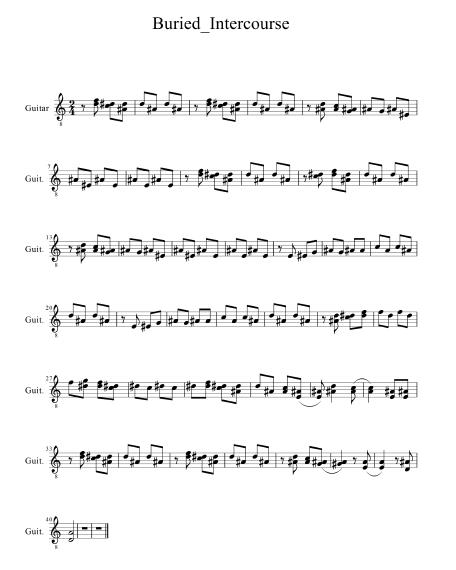
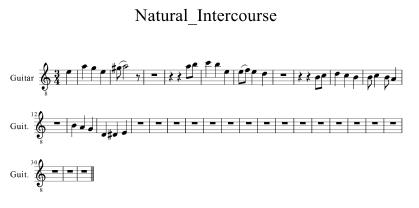
****************************************************************************************
5. Statistical Signal Processing
Memories are like mushrooms. The fungi grow all over the place, in many different regions of the woods. The fungi all connect to form a single organism. Sometimes, the fungi get hyphae with the soil and spread into to the deepest darkest as well as the lightest, cleanest regions of the woods. If you pick one mushroom, it won't kill the entire life form. Statisticians now attempt to model data and grow data architectures using the models of the circuitry and processes of the regions of the brain. We, as people trying to survive with vitality, need to store memories and we need to change the memories that we have to better take care of those that depend on us. The goal of signal processing is to balance out the storage of memory and the superposition, or restructuring, of memory. Basically, if we work through our memories with a psychologist, we will change the circuitry to better live a happy life. A more practical demonstration is the translation from Newtonian physics to Quantum physics, but I don't remember the equations.
I break up long-term memory systems into sensory coding, episodic memory, and representations that guide action.
For sensory coding there are about seven models. The goal is to maximize complementary input data. (Be sure to look up Bhor's Complementarity and Heisenberg's Uncertainty as well as their relationship) A computer should be able to isolate the effects of an input so that it may catch irregularities in the pattern. My little mouse Grace has a sense of smell, a sense of taste, and a sense of hearing. If I provide food every time after singing herhim a lullaby, heshe will isolate the lullaby as having the output of food.
Episodic memory requires associative learning trees. The associative learning tree is actually flipped over with the branches facing down. At the end of each branch is a very simple object or property. The branches connect up to the single tree trunk which represents the entire long-term memory. The memory storage process is separate from the memory retrieval process which makes it possible for the branches of the tree to break off without the trunk being destroyed. Just as trees compete for water and ions within the soil, sunlight within the air, so also do neural networks (that I create) compete for value and importance. (See The Freedom to Model: Antonio Gramsci) Social hierarchies can be used to create a competitive learning environment. ND: You’ve got this part down…How was Vegas.
Finally, value systems train the senses to favor certain inputs and deny others. Similar to the way aesthetics deny their intuition and scientists deny everything. In the brain, dopamine manages immediate reward systems. In data architecture, we could manage input symbols (representation) that are significant to the behavior of the computer with expected cost and benefit analysis. Of course, we would need to be economically rationale when programming love.
4. Macro Synapse
One of the first synapses we know is the space between our mouths and a mother's breast. Liquid life gushes out of the mammary fountain of youth. We demand sustenance from the only source that we know to get it from. While an infant, distance from our mother does not break our attachment to the taste and feel of her milk. The synapse between the mouth and breast forms much before the baby is even born. The impact of learning by milk strengthens in nature.
In the Wilderness of Yosemite, bears aren't the only animal to fear. There are lions! I swear. These lions are drawn by the mountain ranges to the flowing rivers. The lions are caught by and catch the smell of a potential river to seek out its nourishment.
A sun pulls a planet from light years away, a river pulls a lion from miles away, and a breast pulls a baby's mouth from life cycles away. Synapses range, in magnitude, from breast feeding to interplanetary distances. The macro synapse pervades life on all scales. The neuron synapse is geometrically similar to many other spaces between ob- jects that have chemicals filling the environment. The pH of a neuron synapse depends on the combination neurotransmitters. The pH of Yosemite, the vernal chasm, depends on a balance of human pollution and animal purity. The pH of galaxies depends in the distribution of planets. Neural networks tend to be the collections and clusters of the members of the environment. As the mother passes milk to the baby, she passes very tangible neural networks - called chemicals. Using 3D printers, we can print out chemical models that help the student learn synaptic modeling.
Within data architecture, neurobiology, “inorganic” circuitry, and statistical modeling, we can program neural networks that will eventually weene from the mother programmer – Mr. Mom. Although neural networks do not encompass objectively true realities, they aim to help the computer become autonomous enough to be able to perform on its own.
3. Grandfather Pendulum Swing
The last great paradigm shift, in science and understanding, was Einstein’s model of relativity. Since then, people have ventured out into the Universe, beyond our galaxy, to find truth. People have also dug deep into the biochemistry of materials to find truth. The next great paradigm shift will be in a broader, more natural, understanding of the limitations of our perceiving organs. It doesn't matter how pungent a smell is – a sick individual can only smell as well as their nose will allow them to. On the flip side, not all humans are equal. Our abilities to perceive are different and the difference in our skin color is a simple indicator (man OUGHT to be treated as having the same potential – I delve into this in The Freedom to Model). History reveals a pendulum swing, back and forth, between absolute truth and relativity, between objectivity and subjectivity, between mind and body. If you have ever seen a very large pendulum, you might remember that over time, the pendulum veers from a straight path. The razor’s edge is very sharp, and difficult to climb back up on once you’ve fallen off. We could keep climbing back up onto the razor stepping on the compassionate feet of our enlightened forefathers, or we could give our old models time to heal by accepting the nonlinearity of relations. One of the first steps is to look into the topology (step 1.5 is to look up “topology”) of nature. The second step is to, from this point on, use non-integer dimensions in relational diagrams. The need that this methodology meets, that integerbased dimensionality doesn't meet, is to produce natural laws of survivtality. In other words, fraction-based dimensionality will help manwoman better survive with vitality. A weakness in my argument is the lack of practical demonstration. From intuition and colloquial metaphors of the physics of space-time one can imagine a gazelle on the top of a mountain. The gazelle can see the river at the lowest point in the valley below himher. The gazelle takes a mental picture of the path that it will take to get the river, planning on a gap in visibility of the river once heshe passes through the tall trees along the curve of the journey. During the gap in visibility, or the synapse of experience, the gazelle also experience a gap in dimensionality.
Light bends around planets and space-time folds onto itself. Do you think the gazelle maintained composure despite the dangers of the synapse?
2. Proposed Reproducible Experiment (for the sake of science)
Must look at and compare multiple paradigms in order to determine the patterns of the micro and the macro and ultimately learn from them. We look at the seeds of intelligence in order to grow a tree of understanding. Big data reveals the hidden states of natural occurrences. Geological data, specifically, demonstrates nature's nature.
I propose a reproducible experiment for the sake of the scientific method. As truth is only measured by the falsifiability and reproducibility, at least one experiment is necessary in order to prove the worth of this writing.
The question I ask is: Can man remember images words smells sounds feelings while experiencing sensory deprivation?
I hypothesize that: a human does not need sensory inputs during awakeness in order to recall memories.
The theory I am falsifying is: Long term memory retrieval is triggered by observation with the traditional five senses.
Implications: The memory retrieval process is a formal “sense”
Is recalling memory = perceiving? Sensing?
1. Survivtality of the Synapse
Survivtality, a combination of survival and vitality, pervades all of natural life. The bear not only wants to keep on living heshe also wants to perform with vitality. The bear perfects hisher strut, yawp, hunt, rest, and sense of smell over the course a lifetime. The bear has some influence over its adaptability and therefore loads the dice of randomness. Random… Jeff Foxworthy would say: “I think that fella who lost the race random.” I actually cried when my 11th grade biology professor explained to me the colloquial and scientific definition of “random.” He decomposed “random” as “lacking pattern” or “order” or whatever he said; I couldn’t really listen over my tears. The disharmony within a symbol being decomposed into “non decomposable” produced as much dissonance in me as an Eric Satie piece – though this experience was hope shattering. At the time, all I did was follow the hypnotizing man… Now I understand the power of axiom-based truth! “Random” is now “that which has not been modeled.”
This altogether evades the disenchanting ambiguity of the identity of the forces that influence phenomenon. Not only will the randomness be modeled in the future so also will no apparent change happen in the statistical modelingprediction process. Winwin as Stephen Covey would say. Now let’s turn to the “randomly” mutating bear Bear along with her cub Cub. Bear begets Cub who has genetic mutation. If Cub happens to have a genetic mutation that is hospitable in hisher environment (e.g. Keen sense of smell) then we, as observers, predict that hisher genes will pass on. Rather than create a scientific exploratory block by leaving the mutation up to “old-decomposition randomness,” we open up a world of opportunity, in research and discovery, by shifting our mental model to the idea that maybe there are influencing forces out there that teachtrain Cub to have a keen sense of smell.
Bear puts her Cub through rigorous training to prepare for the eventual split. Bear demonstrates effective habits and Cub emulates them. Cub learns how to predict, maintain health, and cope with unfamiliar shifts in the dynamic wilderness.
One season, neither Bear nor Cub anticipate the change in the salmons' migrating pattern. Bear and Cub venture out of the woods to feed at the similar place and time of season they had fed the previous season, but, the salmons never appeared. Unknown forces held back the salmon. Maybe another bear up the river is catching all of the food. The error between Bear's expectation and Bear's findings, as well as hunger pains, bring Bear direct dissonance and Cub indirect dissonance. A neurosurgeon told me, once, that if we stop learning, we die. A smart bear, as most bears are, lessens the error between hisher predictions and observations. A wise bear considers nature's error on top of hisher own.
So Cub, having the freedom and responsibility to listen to the trees, the birds, the sky, the rivers, hisher own body as well as Bear, notices that the smallest twig looks like the biggest tree and that a tiny robin looks like a great big eagly, the moon shines similarly to the sun and a puddle resembles a lake. Cub looks inward and says: “I must be similar to outward.” Cub looks at Bear and can only think of breast milk. Cub smiles because heshe knows not and lives accordingly. Closure is harmonious and so also are whole integered dimensions. The space between two atoms is similar to the space between galaxies. Man's seed is similar to man's spinal column and artificial is similar to natural. I hope this is not a mistake to write that the magic to survivtality is in the properties of the relation between linear polarities. The relation: copper wire, chemical cesspools, time-distance, river, light.
Darkness is always in SOME synapse.
